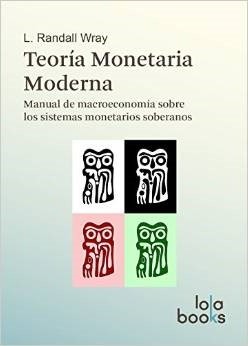L. Randall Wray | January 15, 2015
If you, too, are living in one of the sub-zero climes right now, you might want some stimulating reading:
1) Here’s one of the best and fairest summaries of MMT that I’ve seen, by Joe Guinan.
As Joe says:
“Few matters of economic importance are as woefully misunderstood as modern money. It can seem a fiendishly complicated subject, even to economists. Schumpeter confessed to never having understood money to his own satisfaction, while Keynes claimed to know of only three people who really grasped it: ‘A Professor at another university; one of my students; and a rather junior clerk at the Bank of England’.”
Reminds me of the time Robert Heilbroner called me up after reading my draft 1998 book, Understanding Modern Money, apologizing because he could not write a blurb for the jacket. Money is, he said, the scariest topic there is, and your book is going to scare the hell out of everybody. And by Jove he was right.
Anyway, Joe goes on to argue that MMT seems to have the theory, description of real world operations, and policy right, but needs some better political economy. I agree. Geoff Ingham has done some pretty spectacular work on that, but we need more.
2) As you probably know, something like 90 percent of Americans do not have passports. Presumably, few have been to any rich, developed country. I’m including the USA in that, since we long ago gave up any pretense at striving toward such.
Well, maybe a few have been to Canada, which almost qualifies.
As a result, Americans live in their own little hermetically sealed bubble. They have no idea how the others live. They probably believe that all of Europe—say—also has to contend with incomprehensible health insurance bills (and declaring bankruptcy because they cannot pay them), outrageously expensive colleges (and bankrupting student debt), crumbling infrastructure (and JFK airport, which would embarrass any developing nation), and heavily armed and unbalanced neighbors (that would scare the bejeebers out of most of Africa’s child armies).
Well, Ann Jones tells us what the rest of the developed world thinks of Americans. I’ve lived in Italy for extended periods, and I can confirm that this is no exaggeration. Yep, they think we are crazy loons.
3) However, the real threat to our national prestige comes not from Europe (which, thanks to the euro, will rapidly bring most of Europe down to our level!) but from China. They are eating us for lunch.
To be sure, this article is woefully confused on finance. It worries that the Chinese governments are undertaking infrastructure projects that will not generate enough revenue to pay for themselves! “’People should be concerned because very few of these big projects generate cash,’ said Victor Shih, a China specialist who teaches political economy at the University of California, San Diego.” Oh, yes, China will run out of RMB. Scarcity of keystrokes.
There are, however, two problems faced by China that have to be resolved. The article picks up on one of them (by far the most difficult): “Many experts say such projects also exact a heavy toll on local communities and the environment, as builders displace people, clear forests, reroute rivers and erect dams.” Agreed.
The other is that the national government does not supply enough funds to local governments, which need the development projects to generate their revenues. That leads to excessive development without regard to communities and the environment. You can see my co-authored solution to that problem here.
The NYT story about taking the tops off mountains is true; I saw it in another beautiful little city in a narrow river canyon—not quite the Grand Canyon, but a rival to the Grand Canyon of the Gunnison. No room to expand. Solution? Level the surrounding mountains. Why? Because the developers pay good prices for the land (which goes to the local government), borrow lots of money to build, and then default on the loans. But don’t worry, the creditors get bailed out. Only the community and the environment suffer.
I do not want to make too much of that because the solution is rather simple. Tricky Dick Nixon actually implemented it, calling it “revenue sharing.” That is a misnomer because all you need is national government keystrokes into local government budgets.
4) The top one-thousandth of Americans now owns a fifth of everything. Isn’t that sweet?
See this article by Scott Bixby. Now, if you think they will be happy with that, you do not understand the way the truly filthy rich think. They want it all.






 ShareThis
ShareThis